Explore Dubai - United Arab Emirates (UAE) Travel, Asia
Dubai, a city where elegant comfort meets timeless heritage, has grown into a global tourism powerhouse. Known for its awe-inspiring skyscrapers–the Burj Khalifa, the world’s tallest building, pristine beaches, and world-class shopping, Dubai has something for every traveler. Whether you're a solo explorer, a family on vacation, or a couple seeking a romantic getaway, Dubai’s blend of adventure and stunning innovation makes it a must-visit destination in the UAE.
Population: Approximately 3.6 million in 2023.
Economy: Dubai's economy is diverse, driven by tourism, real estate, trade, and financial services. Once reliant on oil, it now thrives as a global business hub with strong infrastructure and innovation.
Landmarks: Famous for the Burj Khalifa, Palm Jumeirah, and the Dubai Mall.
United Arab Emirates
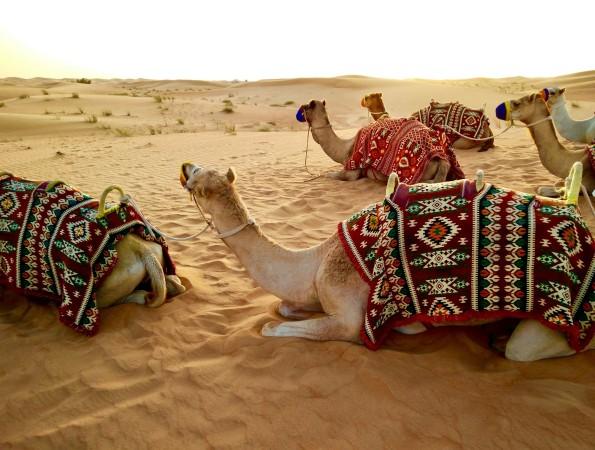
Overview of Dubai
History & Cultural Influence
Dubai's transformation from a modest fishing town to a global city is nothing short of remarkable. For centuries, it was a trading post along ancient trade routes, connecting Africa, Asia, and Europe. Today, Dubai reflects a fascinating mix of old and new, influenced by Islamic traditions, this unique city embraces a multi-ethnic society where modernity and heritage coexist harmoniously. From the beautiful Jumeirah Mosque to the bustling Gold Souk, Dubai’s cultural diversity is one of its greatest strengths.
Interaction with the Locals
Dubai is home to over 3.6 million people, making it the most populous city in the UAE. The population is highly diverse, with expatriates accounting for around 85-90% of the residents, hailing from countries such as India, Pakistan, the Philippines, and Western nations. Emiratis, the native citizens, make up about 10-15% of the population. Despite being a minority, Emirati citizens play a key role in preserving the country’s culture and traditions, while embracing the city’s rapid modernization. This mix creates a vibrant, multicultural environment that reflects Dubai's global status.
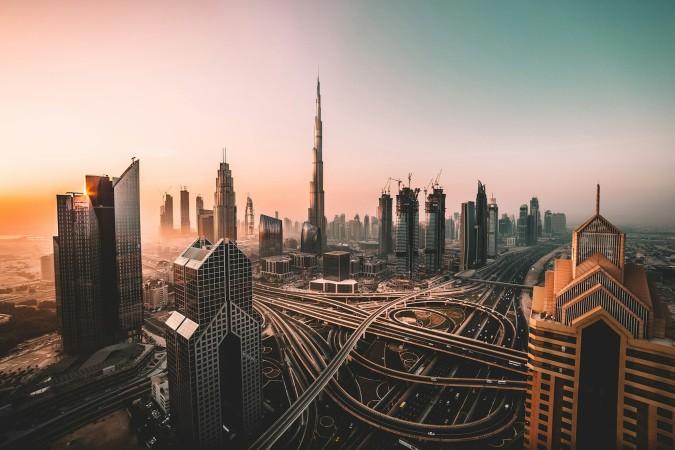
Sunrise shot of Downtown Dubai and the Burj Khalifa - © David Rodrigo
Top Attractions in Dubai
Dubai offers a treasure trove of its iconic landmarks, blending modern marvels with historic gems. From the thrill-seekers to culture buffs, Dubai’s attractions cater to everyone, offering a unique glimpse into the city’s incredible diversity.
Burj Khalifa
The Burj Khalifa, an iconic emblem of Dubai's skyline, is the world's tallest structure, standing at 828 meters. Its striking design is inspired by Islamic architecture, and it stands as a global symbol of innovation and ambition. Visitors can ascend to the At The Top observation decks on the 124th, 125th, and 148th floors for breathtaking panoramic views of the city, the Arabian Gulf, and even the desert stretching beyond the horizon.
Palm Jumeirah
This world-famous island is home to luxury resorts, including the spectacular Atlantis, The Palm, which features a massive water park, and the enchanting Lost Chambers Aquarium. Visitors can enjoy fine dining at award-winning restaurants such as Nobu and Hakkasan, relax at exclusive beach clubs or take a yacht tour around the island for stunning views of Dubai’s coastline.
Dubai Mall
More than just a shopping destination, the Dubai Mall is a world-class entertainment complex that offers experiences for all ages. As the largest mall in the world, it houses over 1,200 stores, including luxury brands like Gucci, Chanel, and Louis Vuitton. Beyond shopping, visitors can explore the Dubai Aquarium and Underwater Zoo, which showcases over 140 species of marine life, or enjoy an indoor ice-skating rink at Dubai Ice Rink.
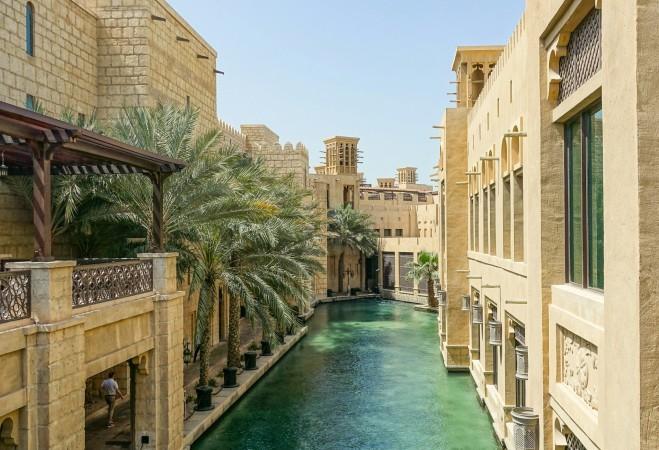
Palm Jumeirah - © Zosia Szopka
Must-Try Dishes in Dubai
Dubai’s diverse cuisine is a reflection of its melting pot of cultures, blending traditional Emirati flavors with global influences from the Middle East, Asia, and beyond.
- Shawarma: A quintessential street food in Dubai, shawarma consists of marinated, spit-roasted meat (usually chicken or lamb) wrapped in flatbread and served with garlic sauce, pickles, and fries.
- Al Harees: A staple of traditional Emirati cuisine, Al Harees is a simple yet flavorful dish made from wheat and meat, slow-cooked to a porridge-like consistency. Often served during Ramadan and festive occasions, it’s a dish that embodies the rich heritage of Dubai.
- Machboos: Similar to biryani, Machboos is a fragrant rice dish cooked with tender meat (chicken, lamb, or fish) and a blend of spices such as saffron, cardamom, and cinnamon. It’s a hearty, flavorful meal commonly enjoyed in Emirati households.
- Luqaimat: These sweet, golden dumplings are made from flour, yeast, and sugar, deep-fried until crispy, and then drizzled with date syrup or honey. Luqaimat is a popular dessert, especially during Ramadan, and is loved for its crunchy exterior and soft, doughy center.
- Balaleet: A unique Emirati breakfast dish, Balaleet combines sweet and savory flavors. It’s made from sweetened vermicelli noodles flavored with saffron and cardamom, served with an omelet on top. It’s a light yet satisfying meal that highlights the balance of flavors in Emirati cuisine.
- Karak Chai: Not a dish, but a must-try beverage, Karak Chai is Dubai’s take on Indian-style spiced tea. Made with black tea, milk, and a mix of cardamom, ginger, and sugar, it’s a comforting drink enjoyed by locals and tourists alike, often from small street-side cafés.
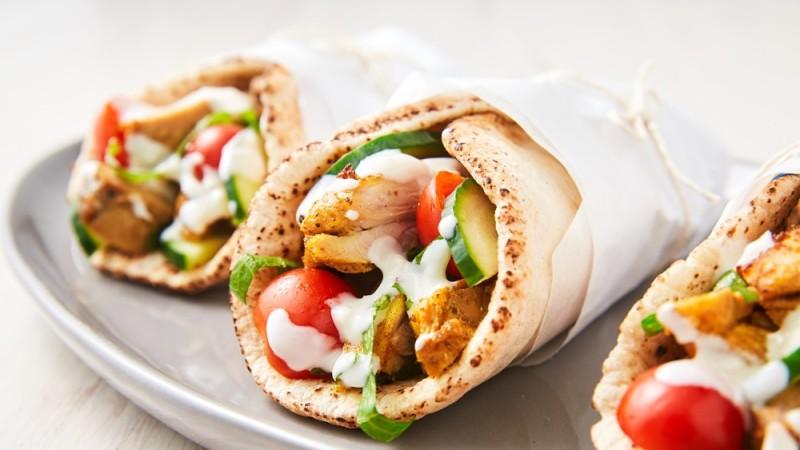
Shawarma - © Delish
Festivals & Local Celebrations
Dubai is home to numerous festivals and celebrations throughout the year, offering visitors a chance to experience the city’s rich cultural heritage and vibrant modern lifestyle.
Dubai Shopping Festival (DSF)
The Dubai Shopping Festival (DSF), which takes place every year from December to January, is one of the city's largest events. Visitors can enjoy huge discounts at malls and boutiques, exclusive product launches, and incredible raffle prizes. Beyond shopping, DSF features daily fireworks, fashion shows, live performances, and street festivals. It’s a family-friendly event with attractions like outdoor carnivals, kids’ workshops, and food festivals.
Dubai International Film Festival (DIFF)
DIFF brings together filmmakers, actors, and cinephiles from around the world to celebrate cinema, with a special focus on films from the Arab world. Over several days, DIFF screens a diverse selection of films, including world premieres, documentaries, and short films, offering a platform for both established and emerging filmmakers.
Eid Celebrations
Dubai is an incredible spot to celebrate Eid al-Fitr and Eid al-Adha, two of Islam's most important holidays. Eid al-Fitr marks the end of Ramadan, the holy month of fasting, while Eid al-Adha commemorates the willingness of the Prophet Ibrahim to sacrifice his son in obedience to God. During these times, Dubai comes alive with celebrations that include public prayers, family gatherings, feasts, and charitable activities.
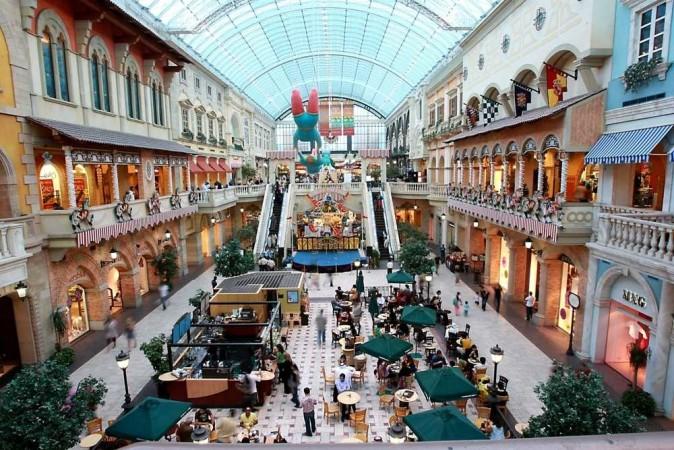
Dubai Shopping Festival - © Mercato Shopping Mall
What to Do in Dubai
- Adventure Sports in Dubai: Dubai is a top destination for thrill-seekers. Skydive Dubai provides skydives over the gorgeous Palm Jumeirah, dune bash in the desert, and sandboarding. Water sports like jet skiing, parasailing, and kite surfing are also popular along Dubai’s coastline.
- Desert Safari in Dubai: A desert safari is one of the most iconic activities in Dubai. After dune bashing in a 4x4 vehicle, you can ride camels, try henna painting, and watch live performances, including belly dancing and Tanoura shows, all while enjoying a traditional Bedouin meal under the stars.
- Cultural Experiences in Dubai: If you’re more into history and culture, take a stroll through the Al Fahidi Historical District or visit the Dubai Museum. For a taste of local culture, hop on a traditional dhow boat and cruise along Dubai Creek, or take a walking tour of the bustling Gold Souk and Spice Souk in Deira.
Shopping in Dubai
- Dubai Mall: Dubai Mall is the world's largest mall, providing an unrivaled shopping experience with luxury brands such as Gucci and Louis Vuitton with high-street fashion. Beyond shopping, the mall also features attractions like the Dubai Aquarium and Ice Rink, making it a destination for the whole family.
- Mall of the Emirates: Another premier shopping destination, Mall of the Emirates is home to Ski Dubai, an indoor ski resort, as well as a wide range of international retailers. Visitors can enjoy everything from fine dining to family-friendly entertainment.
- Gold Souk: This bustling market is home to hundreds of dealers that sell stunning gold jewelry at moderate prices. It's a must-visit for anyone interested in purchasing gold, but even if you're not buying, it’s worth a visit just to admire the craftsmanship.
- Spice Souk: Located near the Gold Souk, the Spice Souk is a sensory experience where vendors sell fragrant spices, dried fruits, and herbs. It’s the perfect place to pick up local ingredients and souvenirs.
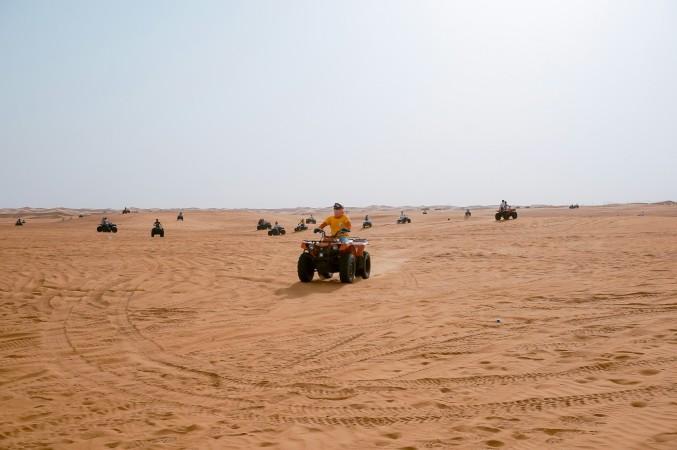
Desert Safari in Dubai - © Toa Heftiba
Weather in Dubai: Best Time to Visit
Dubai is known for its warm, sunny weather year-round, with two main seasons: hot summers and mild winters. Dubai sees very little rain, averaging around 5 days per year, typically during the winter months.
Summer in Dubai
The summer months in Dubai can be extremely hot, with temperatures often exceeding 40°C (104°F), combined with high humidity. Outdoor activities are limited during this time, but Dubai’s world-class indoor attractions, such as malls, indoor theme parks, and air-conditioned hotels, make it a viable destination even in the peak of summer. If you do visit during this season, plan for early mornings or late evenings for outdoor exploration.
Winter in Dubai
Winter is the best time to visit Dubai, with average temperatures ranging between 17°C to 25°C (63°F to 77°F). The cooler climate makes it ideal for enjoying outdoor activities like beach visits, desert safaris, and exploring the city’s landmarks. This is also the peak tourist season, so expect bustling crowds at major attractions.
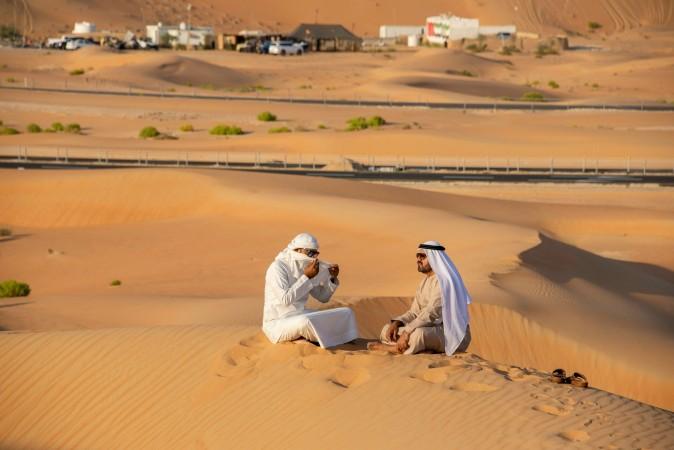
Chilling at the desert right outside Dubai - © Sajimon Sahadevan
Essential Travel Information
Getting Around Dubai
- Dubai Metro: The Dubai Metro is a clean, affordable, and fully automated rail system that connects major parts of the city. The metro is divided into Gold Class, which offers a more luxurious experience, and Standard Class.
- Taxis: Taxis are widely available and are relatively affordable compared to Western cities. For women traveling alone, pink taxis with female drivers are available for added comfort.
- Ride-hailing Apps: Uber and Careem are the most popular ride-hailing apps in Dubai, offering the convenience of cashless payments and the ability to book rides on demand.
- Abra (Water Taxi): For a unique experience, take an Abra, a traditional wooden boat, to cross Dubai Creek. It’s an inexpensive and scenic way to travel between Deira and Bur Dubai, the city’s historical neighborhoods.
- Public Buses: Dubai’s public bus system covers most areas of the city and is a cost-effective option for budget travelers.
ATM & Banking Services
ATMs are widespread and can be found in malls, hotels, airports, and tourist areas, accepting most international cards for cash withdrawals in local currency. Credit and debit cards are widely accepted across Dubai though it's advisable to carry some cash for smaller purchases or when visiting local markets. For those needing more complex banking services, Dubai provides easy access to international financial institutions, ensuring tourists can manage their finances conveniently throughout their stay.
Where to Stay in Dubai
- Luxury Hotels: Dubai is renowned for its ultra-luxury hotels, featuring stunning architecture, private beaches, high-end spas, and gourmet dining experiences. Many luxury hotels are located along the coastline or near iconic landmarks, offering breathtaking views and exceptional service.
- Mid-range Hotels: Dubai has numerous mid-range hotels offering quality services at reasonable prices. These hotels provide modern amenities, such as pools, fitness centers, and dining options, often located conveniently near major attractions and public transport hubs.
- Family-Friendly Resorts: Families traveling to Dubai can choose from a wide variety of family-friendly resorts that offer large rooms, kids' clubs, and recreational activities like waterparks, beach access, and entertainment programs.
Des articles pour vous

Voyage à Kampong Cham - Cambodge, Asie
Kampong Cham est une charmante ville riveraine située le long du fleuve Mékong. Connue pour son importance historique et ses attractions culturelles, Kampong Cham offre un mélange d'architecture coloniale, de temples anciens et de paysages pittoresques. Kampong Cham est reliée au district voisin de Tbong Khmum par le pont Kizuna, le premier pont au Cambodge à traverser le fleuve Mékong, en faisant un carrefour de transport crucial pour la région.
Population : Estimation de 80 000 habitants (en 2024)
Économie : Bien que n'étant pas encore une destination touristique majeure, Kampong Cham propose des sites culturels et historiques, tels que le temple Wat Nokor et le pont en bambou de Koh Pen, ainsi que des attractions naturelles comme des forêts et des chutes d'eau. Le gouvernement se concentre sur le développement du tourisme pour améliorer l'économie locale.
Points d'intérêt : Wat Nokor Bachey, Phnom Han Chey, Phnom Pros et Phnom Srey, pont en bambou de Koh Pen, Wat Joy T'maw, Preah Theat Teuk Chha, piste d'atterrissage abandonnée de l'US.

Explorez Nha Trang - Voyage au centre du Vietnam, Asie
Nichée le long de la magnifique côte du Vietnam, Nha Trang se distingue comme une destination de premier choix pour les voyageurs. Cette ville côtière, réputée pour ses superbes plages et sa vie marine foisonnante, s'adresse à tous. Nha Trang vous accueille à bras ouverts, que vous recherchiez des aventures, de la culture ou de la détente au bord de la mer. Ce guide vous fera découvrir les points forts de cet endroit magnifique, facilitant ainsi la planification de votre voyage de manière fluide et excitante.
Population : Environ 423 000 habitants en 2019.
Économie : L'un des principaux centres touristiques du Vietnam et la plus grande économie de la province de Khanh Hoa.
Sites emblématiques : Célèbre pour les tours Cham de Po Nagar, la cathédrale de Nha Trang et l'île Hon Mun.

Voyage à Sihanoukville - Cambodge, Asie
Sihanoukville, une ville côtière du sud-ouest du Cambodge, est la capitale de la province de Preah Sihanouk. Située sur une péninsule le long du golfe de Thaïlande, la ville est bien reliée à Phnom Penh par des autoroutes principales et dispose d'un aéroport international.
La ville abrite le seul port en eau profonde du Cambodge, jouant un rôle crucial dans la logistique et le commerce du pays. Les plages magnifiques de Sihanoukville, telles qu'Ochheuteal et Serendipity, attirent aussi bien les touristes nationaux qu'internationaux. Le développement économique a prospéré ces dernières années, en particulier grâce à la création de la Zone économique spéciale de Sihanoukville (SSEZ) et aux investissements chinois dans les casinos, l'immobilier et les stations balnéaires. La ville offre également des attractions naturelles telles que le parc national de Ream et plusieurs îles voisines, en faisant une destination variée pour les voyageurs d'affaires et de loisirs.
Population : La population de Sihanoukville était d'environ 160 000 habitants en 2024.
Économie : Sihanoukville, une ville côtière en pleine croissance au Cambodge, se distingue par son mélange dynamique de développement économique et de tourisme. La Zone économique spéciale de Sihanoukville (SSEZ) est devenue un pôle industriel majeur, abritant plus de 180 entreprises et créant des milliers d'emplois. Avec le seul port en eau profonde du Cambodge, la ville joue un rôle clé dans le commerce et la logistique du pays. Bien qu'elle se soit transformée d'une petite ville balnéaire tranquille en un centre urbain animé, Sihanoukville reste célèbre pour ses plages immaculées, attirant des touristes tout au long de l'année. Les investissements chinois importants ont alimenté la croissance des hôtels, des casinos et de l'immobilier, faisant de la ville un centre d'opportunités économiques et d'hospitalité.
Monuments : Plage d'Otres, Plage d'Ochheuteal, Plage de l'Indépendance, Parc national de Ream, Chute d'eau de Kbal Chhay, Monument des Lions d'Or, Wat Leu.

Explorez Kharkhorin - Voyage en Mongolie, Asie
Bienvenue à Kharkhorin, un trésor historique niché au cœur de la Mongolie. Ancienne capitale vibrante de l'Empire Mongol sous le légendaire Gengis Khan, Kharkhorin se dresse comme un témoignage de la riche culture et de l'histoire de la Mongolie. Cette ville antique possède une combinaison unique d'importance historique et de paysages époustouflants, en faisant une destination incontournable pour un voyage de rêve en Mongolie. En mettant le pied à Kharkhorin, vous ferez un saut dans le temps, à une époque de grands palais, de routes commerciales prospères et d'échanges culturels sans pareils. Que vous soyez intrigué par les ruines anciennes, désireux d'explorer les traditions locales ou simplement en quête d'une immersion dans la beauté naturelle de la Mongolie, Kharkhorin a quelque chose à offrir à chacun.
Population : Environ 1 000 habitants en 2020.
Économie : L'une des attractions touristiques les plus importantes de la Mongolie et l'ancienne capitale de l'Empire Mongol.
Monuments : Célèbre pour les Ruines de Kharkhorin, le Monastère d'Erdene Zuu, et la Vallée d'Orkhon, un site du patrimoine mondial de l'UNESCO.

Explore Luang Prabang - Laos Travel, Asia
Luang Prabang, nestled in northern Laos at the meeting point of the Mekong river and Nam Khan river, is a city celebrated for its rich cultural heritage and stunning natural beauty. Recognized as a UNESCO World Heritage Site in 1995, it boasts a unique blend of traditional Lao and French architecture that has been carefully preserved. Whether you're wandering through its ancient temples, admiring the local architecture, or soaking in the natural beauty of waterfalls and rivers, Luang Prabang offers something for everyone.
Population: Approximately 470,000 in 2020.
Economy: Luang Prabang's economy thrives on tourism, with its UNESCO status drawing visitors to its temples, natural wonders, and cultural experiences. Local crafts, hospitality, and small businesses also play vital roles, supporting the town's sustainable growth. Local crafts, hospitality, and small businesses also play vital roles, supporting the town's sustainable growth.
Landmarks: Famous for the Wat Xieng Thong, Royal Palace Museum (also known as Haw Kham), and Mount Phousi (Phou Si Hill).Luang Prabang, nestled in northern Laos at the meeting point of the Mekong river and Nam Khan river, is a city celebrated for its rich cultural heritage and stunning natural beauty. Recognized as a UNESCO World Heritage Site in 1995, it boasts a unique blend of traditional Lao and French architecture that has been carefully preserved. Whether you're wandering through its ancient temples, admiring the local architecture, or soaking in the natural beauty of waterfalls and rivers, Luang Prabang offers something for everyone.
Population: Approximately 470,000 in 2020.
Economy: Luang Prabang's economy thrives on tourism, with its UNESCO status drawing visitors to its temples, natural wonders, and cultural experiences. Local crafts, hospitality, and small businesses also play vital roles, supporting the town's sustainable growth. Local crafts, hospitality, and small businesses also play vital roles, supporting the town's sustainable growth.
Landmarks: Famous for the Wat Xieng Thong, Royal Palace Museum (also known as Haw Kham), and Mount Phousi (Phou Si Hill).

Explore Vientiane - Laos Travel, Asia
Vientiane, the capital of Laos, offers a unique travel experience for those looking to explore a peaceful Southeast Asian city with a deep connection to its cultural roots. Unlike other bustling capitals, Vientiane boasts a serene and laid-back atmosphere, making it a perfect destination for travelers wanting to escape the chaos of more crowded cities. This charming city sits along the Mekong River, offering scenic views, rich history, and a vibrant yet tranquil way of life. As a gateway to exploring Laos, this capital invites you to slow down, immerse in its heritage, and enjoy the local flavors.
Population: Approximately 840,000 in 2023.
Economy: Vientiane's economy is growing steadily, driven by government services, trade, and tourism. Key sectors include agriculture, manufacturing, and construction. The city's strategic location along the Mekong River supports trade with neighboring Thailand and Vietnam.
Landmarks: Famous for the Pha That Luang, Patuxai, and the Buddha Park (or Wat Xieng Khuan).
